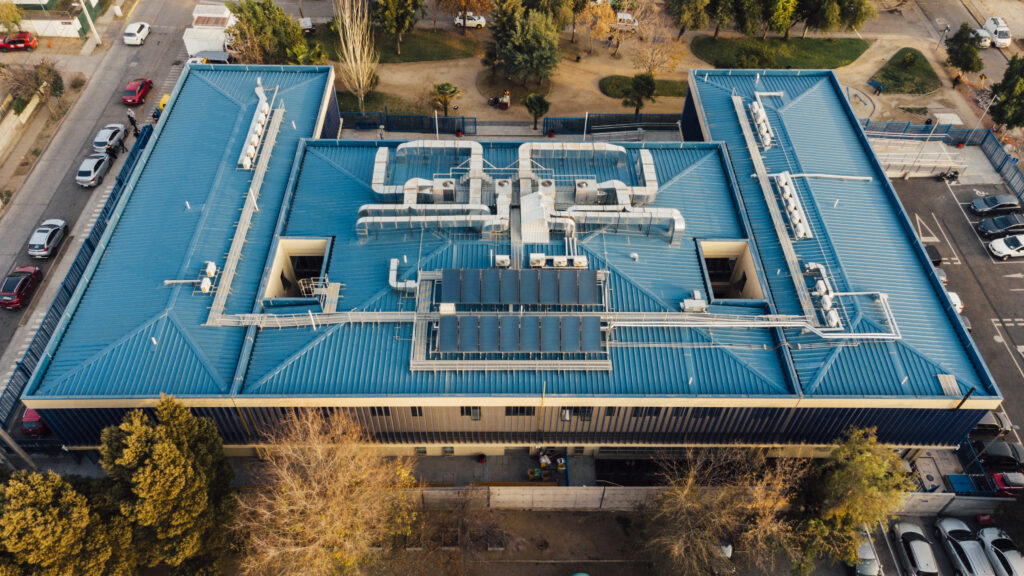Facility management in large institutions like universities and hospitals is a complex operation involving numerous moving parts. From climate control and lighting to asset tracking and maintenance scheduling, these environments demand seamless coordination and high efficiency.
Enter the Internet of Things (IoT) — a transformative technology reshaping how these institutions manage their infrastructure.

The Rising Demand for Smart Facility Management
Universities and hospitals operate at a scale that necessitates robust systems for managing facilities. Traditional approaches often rely on manual inspections, disparate systems, and reactive maintenance, which can lead to inefficiencies, high operational costs, and disruptions in service. IoT sensors offer a smart building technology solution, providing real-time data that enables predictive maintenance, energy management, and remote environmental monitoring.
How IoT Sensors Transform Facility Operations
Predictive Maintenance
IoT sensors can detect anomalies in HVAC systems, electrical infrastructure, or medical equipment before they fail. By continuously monitoring performance indicators, facility managers can schedule maintenance activities proactively, reducing downtime and avoiding costly repairs.
Energy Efficiency
Smart sensors monitor energy usage across different areas, allowing facilities to identify wastage and optimize consumption. For example, sensors can adjust lighting and heating based on occupancy patterns, significantly reducing energy bills. This is crucial for universities and hospitals that operate 24/7 and have high energy demands.
Environmental Monitoring
Maintaining optimal indoor conditions is vital, especially in healthcare settings where air quality directly impacts patient health. IoT monitoring systems can track temperature, humidity, CO2 levels, and other variables in real time, ensuring compliance with health and safety standards.
Asset Tracking
Hospitals in particular benefit from IoT-enabled asset tracking, which helps locate critical medical equipment quickly, reducing search time and improving patient care. Universities can use similar systems to track AV equipment or laboratory tools.
Uses in Universities and Hospitals
At a university campus, IoT solutions can manage lighting across multiple buildings, control heating systems in residential halls, and monitor air quality in classrooms. The result is a smarter, more sustainable campus environment that enhances student comfort and reduces the institution’s carbon footprint.
In hospitals, IoT sensors play a critical role in patient care and operational efficiency. For instance, they can monitor refrigeration units storing vaccines, track patient room conditions, or alert staff to maintenance needs in real-time. These enhancements support better patient outcomes and more efficient healthcare delivery.
Key Benefits for Stakeholders
- Facilities Managers: Gain insights through real-time dashboards, enabling quick decision-making and efficient resource allocation.
- Finance Teams: Benefit from cost reductions through energy savings and predictive maintenance.
- IT Departments: Integrate smart facility solutions with existing infrastructure to enhance cybersecurity and data management.
- End Users: Students, patients, and staff enjoy a safer, more comfortable environment.
Overcoming Any Implementation Challenges
While the benefits are substantial, implementing IoT in large facilities isn’t without challenges. Key concerns include data privacy, network integration, and the upfront investment required. However, choosing scalable, secure IoT automation solutions tailored to each institution’s needs can mitigate these issues.
The Future Is Bright
As the demand for smart facility management grows, the role of IoT in universities and hospitals will become even more pivotal. Emerging trends like AI-driven analytics, wireless sensor networks, and integration with building management systems (BMS) promise even greater efficiency and innovation.
What’s in it for you?
IoT sensors are no longer a futuristic concept; they are a practical, powerful tool for enhancing facility management in universities and hospitals. By embracing these smart solutions, institutions can reduce operational costs, improve safety and comfort, and support sustainability goals. In doing so, they not only improve their infrastructure but also elevate the experience of those who live, learn, and heal within their walls.
For universities and hospitals looking to lead in operational excellence, the path forward is clear: smart, connected, and data-driven.